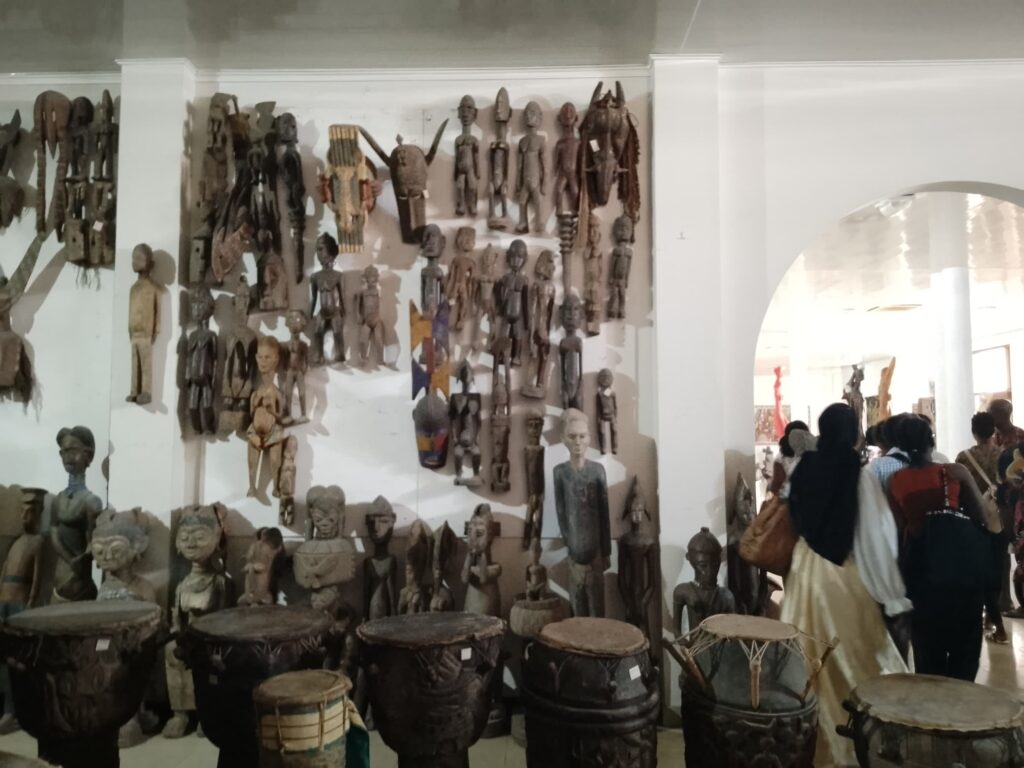African sculptures are more than works of art; they are a powerful representation of the many cultures, ideologies, and customs on the continent.
Beyond their artistic value, these sculptures have served important functions in African communities’ social, religious, and political life.
From the ancient kingdoms of Egypt to the tribes of West Africa, African sculptures have been a central element in storytelling, spiritual practices, and preserving history.
At the Artists Alliance Gallery Omanye House in Accra, founded by Prof. Ablade Glover, we explored a collection of African sculptures from various countries, offering a deeper understanding of their significance.
Historical Overview
The history of African sculpture dates back thousands of years, with some of the earliest known pieces found in Nigeria, dating as far back as 500 BCE. T
he Nok civilization, one of the earliest in West Africa, is renowned for its terracotta sculptures depicting human figures with elongated heads and stylized features.
These sculptures are believed to have served as religious icons or representations of ancestors, highlighting the deep spiritual connection that African communities have with their art.
Some of these statues, often depicting gods, kings, and mythological creatures, were integral to their religious practices and were believed to house the spirits of the gods or the deceased. These sculptures were crafted from stone, wood, and metal, showcasing the advanced skills of African artisans.
Cultural Significance
African sculptures are deeply intertwined with the spiritual and cultural fabric of the societies that create them.
In many African cultures, sculptures are not merely decorative objects; they are imbued with spiritual power and are used in rituals and ceremonies.
Artistic Expression and Symbolism
African sculptures are characterized by their unique styles, which vary greatly from one region to another. While some sculptures are highly stylized with exaggerated features, others are more naturalistic.
The choice of materials wood, bronze, terracotta, ivory, and stone also plays a significant role in the final appearance of the sculpture. Each material carries its own symbolic meaning, often connected to the earth, fertility, strength, or the divine.
The human figure is the most common subject in African sculpture, often depicted in various states of existence, youth, adulthood, old age, or even the afterlife. These figures are not just representations of individuals but are symbolic of broader concepts such as leadership, fertility, and spiritual power.
Animal figures also feature prominently in African sculpture, representing various traits or deities. The leopard, for instance, is a symbol of power and kingship in many African cultures, while the crocodile might represent danger, mystery, or the underworld.
Influence on Modern Art
The influence of African sculpture extends beyond the continent, profoundly impacting modern Western art. African sculptures continue to inspire contemporary artists globally, with many drawing on the rich traditions and symbolic meanings embedded in these works to create new, innovative pieces that resonate with today’s audiences.
African sculptures are more than just works of art; they are symbols of the rich cultural history providing a window into their lives, values, and way of life.
